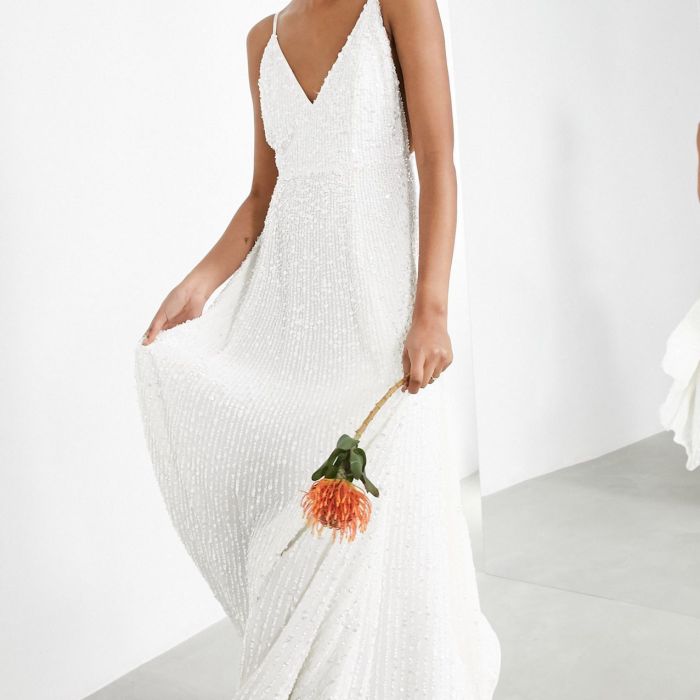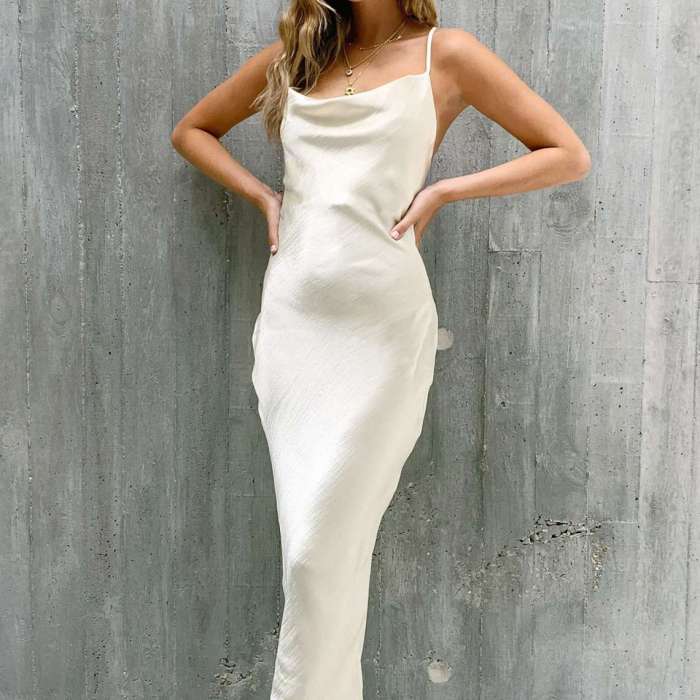Wedding Dress Slips: The Ultimate Guide
Wedding dress with slip – Choosing the perfect wedding dress is a momentous occasion, but the quest for the ideal look doesn’t end there. A well-chosen slip can dramatically enhance the fit, drape, and overall appearance of your gown, transforming it from simply beautiful to breathtaking. This guide explores the world of wedding dress slips, covering everything from types and functionality to care and alternatives.
Types of Wedding Dress Slips
Wedding dress slips come in a variety of materials, lengths, and styles, each designed to meet different needs and complement various dress designs. Understanding these differences is key to selecting the perfect slip for your big day.
Materials commonly used include silk, satin, nylon, and blends thereof. Silk offers luxurious comfort and a beautiful drape, while satin provides a smooth, elegant finish. Nylon, a more affordable option, is durable and easy to care for. Lengths range from tea-length to full-length, and styles include bias-cut slips for a flattering silhouette and slips with built-in bras for added support.
Construction features vary, with some slips featuring adjustable straps for a customizable fit, while others include lace trim for added detail. Some are designed with a built-in bra for additional support and to avoid the need for extra undergarments.
A wedding dress with a slip provides a smooth, flattering base layer, enhancing the overall silhouette. For brides seeking extra sparkle, consider adding embellishments or opting for a gown with more dramatic detailing, perhaps even a stunning design like those showcased in this collection of wedding dress with bling options. Ultimately, the choice between a simple slip and a more embellished look depends on personal preference, and the slip can still be a perfect foundation even for the most dazzling of gowns.
| Material | Cost | Comfort | Durability |
|---|---|---|---|
| Silk | High | High | Moderate |
| Satin | Medium | Medium | Medium |
| Nylon | Low | Medium-Low | High |
Slip Functionality and Benefits
A wedding dress slip acts as an essential foundation, significantly impacting the final look and feel of the gown. Its primary function is to create a smooth silhouette, preventing the dress from clinging to the body and highlighting imperfections.
The choice of fabric influences the drape and flow of the wedding dress. A silk slip, for instance, will lend a luxurious fluidity to the gown, while a satin slip provides a sleek, polished finish. Nylon slips, while less luxurious, offer a practical and smooth base layer.
Slips effectively prevent underwear lines from showing through the dress, ensuring a seamless and polished look. They also provide an extra layer of protection for the dress itself, preventing it from snagging on jewelry or other accessories.
Choosing the Right Slip for Your Dress, Wedding dress with slip

Source: brides.com
Selecting the appropriate slip depends heavily on the style and fabric of the wedding dress. A heavy, structured gown might require a more substantial slip for support, while a lightweight, flowing dress might benefit from a delicate, bias-cut slip.
The neckline of the dress is another crucial factor. A strapless dress might necessitate a slip with a built-in bra, whereas a halter neck dress might pair well with a slip that features a low back or adjustable straps. Choosing an unsuitable slip can lead to visible lines, bunching, or an overall less polished appearance.
Styling and Care of Wedding Dress Slips

Source: brides.com
Proper storage and cleaning are essential to maintaining the condition of your wedding dress slip. Hand-washing in cool water with a gentle detergent is generally recommended for most materials. Avoid harsh chemicals or machine washing, which can damage delicate fabrics.
To prevent snags or runs, handle the slip carefully and store it folded or rolled, avoiding harsh creases. For minor damage, a simple DIY repair, such as carefully stitching a small tear, can often suffice. Specific care instructions will vary depending on the material – silk and satin require more delicate handling than nylon.
Alternatives to Traditional Slips
While traditional slips offer excellent functionality, alternatives like shapewear and bodysuits provide similar benefits. Shapewear offers targeted body shaping, while bodysuits provide a streamlined base layer. The choice depends on individual needs and preferences. Both options are generally more form-fitting than traditional slips.
- Shapewear: Ideal for smoothing and shaping the body under fitted gowns.
- Bodysuits: Offer full-body coverage and a streamlined silhouette, suitable for various dress styles.
Illustrative Examples of Slips with Dresses
Consider three distinct wedding dress styles and their ideal slip pairings:
- A-line gown in lace: This classic style would be beautifully complemented by a full-length silk slip. The silk’s luxurious feel enhances the dress’s delicate lace, while the full length ensures a smooth silhouette. The slip’s delicate nature avoids competing with the lace detailing.
- Sheath gown in crepe: A bias-cut satin slip would provide a sleek and smooth base layer for a sheath dress. The satin’s subtle sheen complements the crepe’s matte finish, creating a polished and sophisticated look. The bias cut ensures a flattering fit against the body.
- Ballgown in tulle: A full-length nylon slip offers a practical and comfortable base layer under a voluminous tulle ballgown. The nylon’s durability ensures it can withstand the weight and volume of the dress, while its smooth texture prevents the tulle from clinging. A built-in bra provides extra support.
FAQ Insights: Wedding Dress With Slip
Can I wear a slip with a sheath wedding dress?
Yes, a sheath dress often benefits from a slip to create a smoother silhouette and prevent cling. Choose a slim-fitting slip in a lightweight fabric like silk or satin.
How do I clean my wedding dress slip?
Always check the care label. Most slips can be hand-washed in cold water with a gentle detergent or dry-cleaned. Avoid harsh chemicals or machine washing.
What if my slip is too long?
A slightly long slip can be easily hemmed by a seamstress or, for minor adjustments, you can carefully fold and stitch the excess fabric yourself.
Are slips necessary for all wedding dresses?
While not always strictly necessary, a slip can significantly improve the fit and appearance of many wedding dresses, especially those made of delicate fabrics or with a fitted silhouette.
